ASEAN issues await the next Philippine president - Blueboard by Diana J. Mendoza, PHD
The 2016 presidential election in the Philippines may yet to be the most challenging in the country’s electoral history. Apart from varied domestic concerns and problems, divisive regional issues await the next president of the Philippines.
First item on the agenda of the next president of the Philippines is the international arbitration case filed by the Republic of the Philippines in January 2013 against the People’s Republic of China contesting the latter’s nine-dash line claim in the “South China Sea” that encroaches on the “West Philippine Sea”. Despite China’s rejection of the Philippines’ Notification and Statement of Claim in accordance with the dispute settlement provisions of UNCLOS, particularly under Art. 287 and Annex VII, the Permanent Court of Arbitration (PCA) in the Hague decided to conduct a preliminary hearing on the scope of its jurisdiction and the admissibility of the Philippines’ claims.
Why engage candidate nomination? - Blueboard by Arjan P. Aguirre
On 29 October 2015, the PCA ruled that it has jurisdiction to hear some territorial claims the Philippines has filed against China. China’s response that the ruling was null and void with no binding legal effect simply echoes China’s earlier pronouncements in relation to the disputed areas in the South China Sea. Neither will China recognize the Philippine arbitration case filed against it and participate in the UN’s arbitration proceedings nor will it accept any decision by the international tribunal.
On 30 November 2015, the PCA concluded its week-long hearing on the merits and remaining issues of jurisdiction and admissibility in the arbitration initiated by the Philippines against China. It intends to issue its decision in 2016. A widely anticipated scenario is that the tribunal will rule in favor of the Philippines, but China will continue to refuse to be legally bound by the Court’s ruling or jurisdiction.
How will the next president of the Philippines deal with such a deadlock? What will be the government’s approach to negotiate or end the deadlock?
Second item on the agenda of the next Philippine president is the country’s assumption of leadership as Chair of the Association of Southeast Asian Nations (ASEAN) in 2017. It will be doubly challenging for the next president because 2017 is the ASEAN’s fiftieth year anniversary.
Based on Article 31 of the ASEAN Charter, each of the member states of the ASEAN takes turns annually to chair the ASEAN. As Chair, the member state presides the ASEAN Summit and related summits, the ASEAN Foreign Ministers Meetings, the ASEAN Coordinating Council, the three ASEAN Community Councils, other ASEAN Sectoral Ministerial Bodies Meetings and Senior Officials Meetings, and the Committee of Permanent Representatives.
It will be the fourth time for the Philippines to chair the ASEAN but definitely its first under the present circumstances. Territorial and maritime disputes over the South China Sea have increasingly become the flashpoint in the ASEAN region, with the Philippines “in the eye of the storm” being the first and only ASEAN country that has legally contested China’s nine-dash claim in the South China Sea.
In 2017, the next Philippine president faces the huge challenge of balancing its own national interest in the South China Sea disputes with the national and regional interests in the ASEAN. Article 32 of the ASEAN Charter requires the Chair of the ASEAN to actively promote and enhance the interests and well-being of ASEAN. The Chair of the ASEAN is also expected to ensure the centrality of ASEAN. How will the next president balance national and regional interests in the ASEAN?
ASEAN member states need China to promote their economic development. But ASEAN member states’ political relationship with China has been rather uneasy and tense as the latter continues to ignore ASEAN leaders’ vocal calls for a peaceful, legal settlement of the South China Sea disputes. Political tensions have intensified because China has repeatedly used provocative measures in securing its interests in the disputed waters in the South China Sea.
China’s increasing assertiveness in the South China Sea has challenged not only ASEAN’s unity but also its diplomatic dexterity. In 2012, China has been able to use its political and economic leverage over Cambodia, then chair of ASEAN, to prevent the ASEAN from taking a unified position on the South China Sea disputes or initiating multilateral discussions and actions in addressing the issue.
The disunity of ASEAN leaders continues to haunt ASEAN summits, as China has repeatedly ignored a number of ASEAN’s joint communique that protest Chinese actions and used “allies” to defend its viewpoints. China has also exploited divisions within the ASEAN to obstruct the latter’s preferred method of consensus making on the South China Sea disputes.
China prefers a divided ASEAN because it is easier for Beijing to take on individual ASEAN countries than the ASEAN collectively. A divided ASEAN also enables China to divide aspects of the issues surrounding the maritime and territorial disputes in the South China Sea.
Will the next president of the Philippines provide the strong leadership that is wanting in the ASEAN, the kind of leadership that can steer the ASEAN towards a united approach or policy on China’s aggression and intransigence in the South China Sea? Will the new president unify or further divide the ASEAN?
Guess, the more urgent question now is who among the presidential candidates is most capable to address these challenges and win the presidency in 2016?
Diana J Mendoza, PhD is assistant professor of political science and director of Southeast Asian Studies Program at the Ateneo de Manila University.
FIRST PUBLISHED IN BUSINESSWORLD
Photos courtesy of Fearless Predictions blogspot
